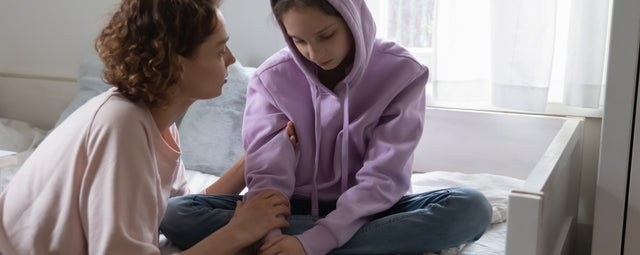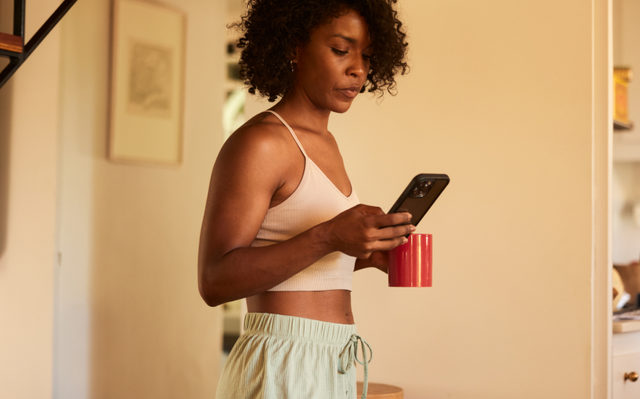My journey with pelvic pain began at a young age. I can remember it vividly, I was 8 and really looking forward to going to the farm, being a city kid seeing animals in a farm with friends was possibly the biggest thing that had ever happened. And there was also going to be lambs and baby chicks and hell I might even see a real horse. It was a biiiig deal. But the night before, I got this horrid feeling in between my legs. This awful achey, pressure that sat on my bladder and wouldn’t budge. I spent the whole night crying on the toilet, begging my Ma to do something to make the pain stop and spent the next day in bed with a hot water bottle, yearning for the adventures my friends were enjoying. This was to become my normal until the age of 12.
I grew up in Belfast, in the 90s. I was a child of the ceasefire generation, I remember playing in the streets and getting up to general mischief around the soldiers. I remember being sat down on the signing of the Good Friday Agreement aged 7 and explained that peace would finally follow. So, when my symptoms first began and no infection was found, getting to the root of the problem wasn’t really a priority. Women’s health wasn’t really a priority. You were brought up learning that periods and childbirth were the punishment for Eve. That this was just something that happened, that life wasn’t always what you’d expect it to be. So, I just carried on, terrified of the toilet, the queen of hot water bottles and burning my back on the radiator, until the symptoms eased age 12.
I was 18 when the pain reappeared and ten years later, it has still not left me. It would take 9, very long years until I finally would get my diagnosis of Non-Relaxing Pelvic Floor Dysfunction and Pelvic Pain. Haven’t heard of it? Well me neither, but the National Institute of Health found that pelvic floor disorders affect 10% of women aged 20-39; 27% of women aged 40-59, 37% of women aged 60-79 and nearly 50% of women over 80. So why are so many suffering in silence for years upon years? Women’s health and the health of people assigned female reproductive systems at birth, has often been shrouded in stigma and shame. Let’s shake things up, shall we?

Pelvic floor dysfunction is a condition where you cannot control the muscles of your pelvic floor. Your pelvic floor muscles are the group of muscles in your pelvic region that act like a cosy sling to keep your bladder, uterus and rectum supported. Your pelvic floor relaxes and contracts these muscles, allowing you to go to the bathroom have sex without any issues. However, when these muscles do not work, this is where the problems begin. My pelvic floor muscles cannot relax, so I experience cystitis like symptoms in my bladder; pressure, urgency, frequency and burning. I experience constipation in my bowel, digestive issues and anal fissures, which are cuts inside the rectum. I also experience pain and hypersensitivity with my vagina, meaning I find insertion painful, have never been able to use tampons and find penetrative sex very hard (if you’ll pardon the pun).
I suffered these symptoms for years, not knowing who to turn to. Test after test after test was performed but no one could understand what was wrong with me. I would go to doctor’s appointment after doctor’s appointment just begging them to tell me I had a UTI, but still nothing. Often the cause was put on myself. I would often be asked about whether I’d had sex and as I had, this was often said to be the cause. Shoulders were shrugged and the phrase, ‘just a common woman’s problem,’ was thrown around a lot. My confidence was zero and I blamed myself for causing the pain.
For years I felt like I was wandering around in and out of life. I went to college, got a degree, travelled the world but I was never really there, I always had a part of me dealing with the pain, trying to live and enjoy life but standing on the sidelines looking in. I never knew anyone else was suffering like I was, the isolation would lead me to despair. My loving partner would try to help the best he could, but the pain always seeped in. I resented myself and longed to be like my friends.
Once I got my diagnosis it felt like the fog had lifted, like I could finally see clearly and wasn’t in the dark anymore. Knowing that this was a condition, that there was nothing I had done to deserve this or cause this gave me the reassurance and validation I needed to start to rebuild my sense of self.
To anyone out there who is going through pelvic pain and feels lost, hopeless or alone, I urge you to reach out to your friends and family. You are not alone in this. Your pain is real and what’s more, I believe you. You do not deserve this pain, there is nothing you have ever done that could have caused it. You deserve to be believed, supported & helped. And I won’t rest until you do.
Three weeks ago, after my pain had ruined yet more Friday night plans, I thought feck it, I can’t be the only one going through this, there must be other people out there feeling as hopeless as me. So, I set up an Instagram account called mypelvicpain. I’d always been so put off by Instagram, the unrealistic expectations and the beautiful people leading beautiful lives that I was most certainly not enjoying but little did I know that there was also a bold, supportive community who were going through the exact same thing I was. I’ve made so many amazing friends already and decided that I should try and raise awareness about Pelvic Floor Dysfunction and provide the vital information that I had once longed for by creating a blog called My Pelvic Pain which you can read here. I am forever grateful for the love and positivity of this community, be that in validating each other’s pain or encouraging body positivity. I feel like I am finally being able to like my body for the things it can do and not constantly berate it for the things that It can’t.






